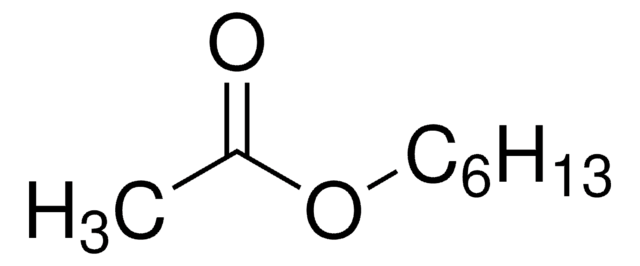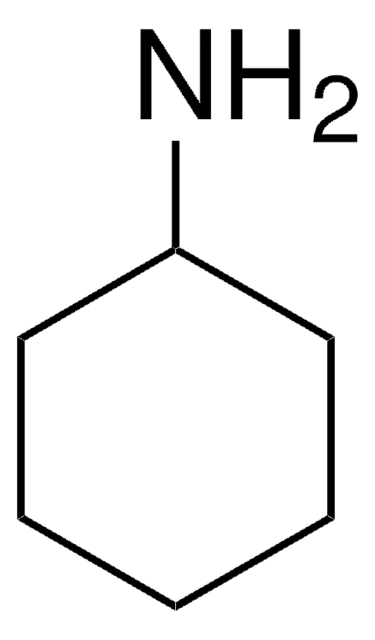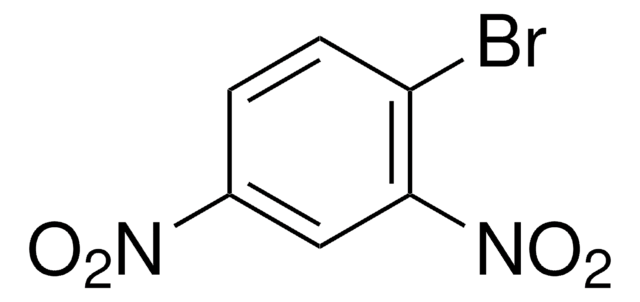242284
Aniline
ACS reagent, ≥99.5%
Synonyme(s) :
Aminobenzene, Benzenamine
About This Item
Produits recommandés
Qualité
ACS reagent
Niveau de qualité
Densité de vapeur
3.22 (185 °C, vs air)
Pression de vapeur
0.7 mmHg ( 25 °C)
Essai
≥99.5%
Forme
liquid
Température d'inflammation spontanée
1139 °F
Limite d'explosivité
11 %
dilution
(for analytical testing)
Impuretés
Hydrocarbons, passes test
Nitrobenzene, passes test (lim. ~0.001%)
≤0.01% chlorobenzene
Résidus de calcination
≤0.005%
Indice de réfraction
n20/D 1.586 (lit.)
pb
184 °C (lit.)
Pf
−6 °C (lit.)
Solubilité
water: soluble
Densité
1.022 g/mL at 25 °C (lit.)
Chaîne SMILES
Nc1ccccc1
InChI
1S/C6H7N/c7-6-4-2-1-3-5-6/h1-5H,7H2
Clé InChI
PAYRUJLWNCNPSJ-UHFFFAOYSA-N
Vous recherchez des produits similaires ? Visite Guide de comparaison des produits
Application
Actions biochimiques/physiologiques
Propriétés physiques
Mention d'avertissement
Danger
Mentions de danger
Classification des risques
Acute Tox. 3 Dermal - Acute Tox. 3 Inhalation - Acute Tox. 3 Oral - Aquatic Acute 1 - Aquatic Chronic 1 - Carc. 2 - Eye Dam. 1 - Muta. 2 - Skin Sens. 1 - STOT RE 1
Organes cibles
Blood
Code de la classe de stockage
6.1A - Combustible acute toxic Cat. 1 and 2 / very toxic hazardous materials
Classe de danger pour l'eau (WGK)
WGK 3
Point d'éclair (°F)
158.0 °F - closed cup
Point d'éclair (°C)
70 °C - closed cup
Équipement de protection individuelle
Eyeshields, Faceshields, Gloves, type ABEK (EN14387) respirator filter
Faites votre choix parmi les versions les plus récentes :
Déjà en possession de ce produit ?
Retrouvez la documentation relative aux produits que vous avez récemment achetés dans la Bibliothèque de documents.
Les clients ont également consulté
Phenanthridinone
Coupling of Enaminones with Nitriles
Notre équipe de scientifiques dispose d'une expérience dans tous les secteurs de la recherche, notamment en sciences de la vie, science des matériaux, synthèse chimique, chromatographie, analyse et dans de nombreux autres domaines..
Contacter notre Service technique












